Art, Equity,
Change
A Conversation with SAIC’s Leaders

The world has significantly changed over the past two years, and art and design institutions across the country have had to intently listen, learn, and evolve to meet the needs of their communities.
To get more insight into what art leaders need to be thinking about today, School of the Art Institute of Chicago magazine gathered Chair of the Board of Trustees of the Art Institute of Chicago Denise Gardner, Chair of the Board of Governors of the School of the Art Institute of Chicago (SAIC) Anita Sinha, and SAIC President Elissa Tenny for a conversation with member of the Board of Governors Michelle T. Boone—who was appointed president of the Poetry Foundation in 2021—moderating.
They talked about the impact of the pandemic, artists as social justice advocates, and how they hope the School continues to grow over the next 25 years and beyond.
ABOUT SAIC'S LEADERS
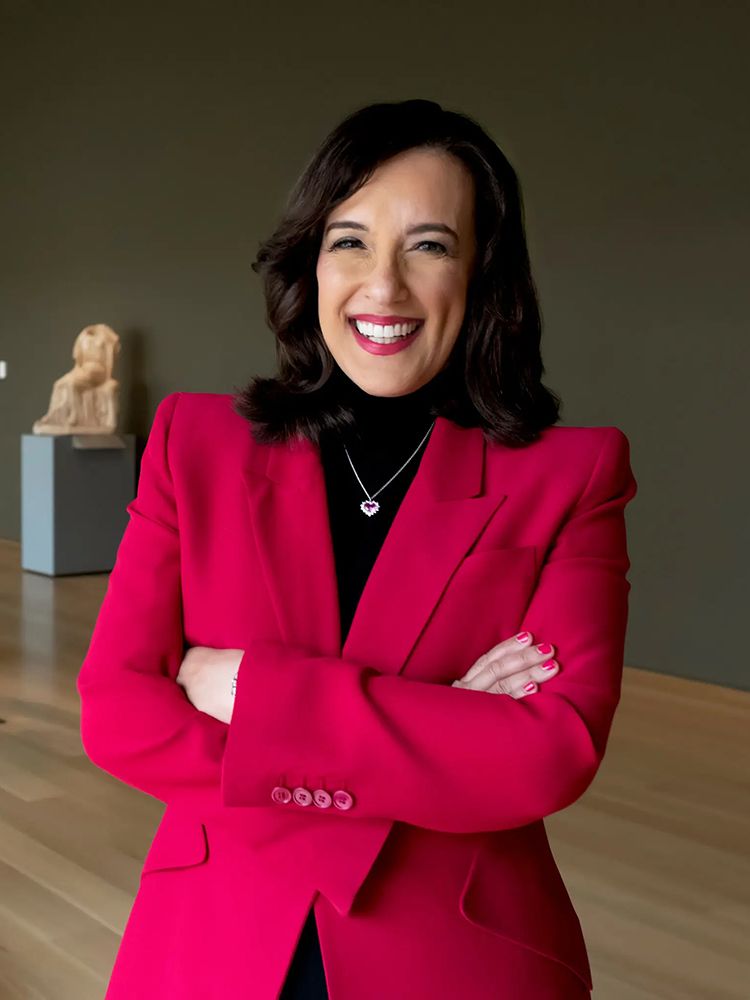
Denise Gardner
Hometown:
Cleveland, Ohio
Favorite Artist or Work:
I don’t really have any one favorite, but what I love [about art in Chicago] is the connectivity between artists and their accessibility. There’s so much public art: [Stephanie and Bill Sick Professor of Fashion, Body and Garment] Nick Cave on Michigan Avenue, Bob Faust at the Poetry Foundation, people like Amanda Williams, Theaster Gates (HON 2014), Kerry James Marshall (HON 2017). These world-class artists have chosen to stay and live in Chicago.
Best Thing about SAIC:
The relationship between the School and the museum.
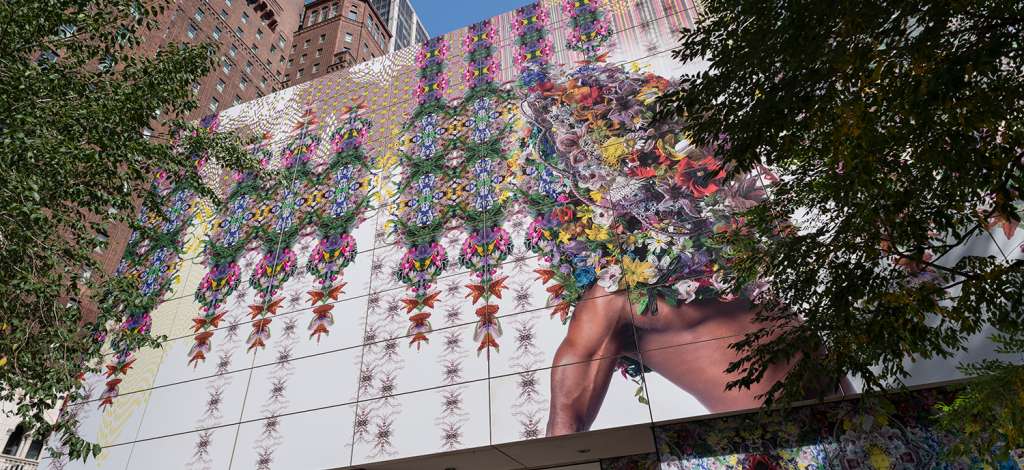
Nick Cave and Bob Faust, Rapt on The Mile
Nick Cave and Bob Faust, Rapt on The Mile
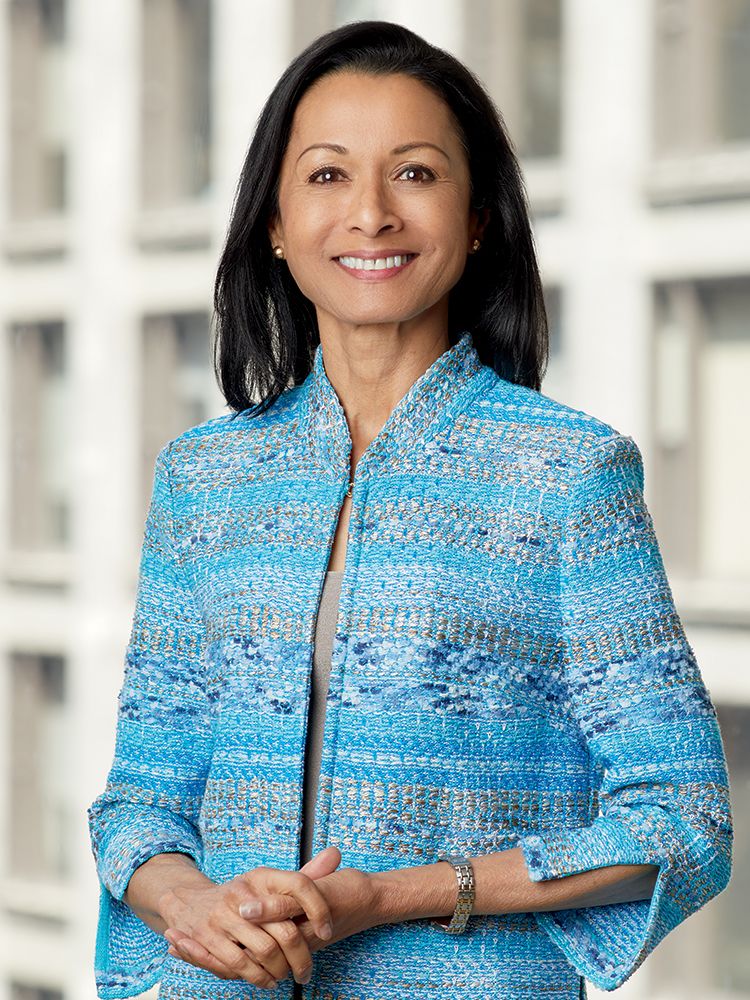
Anita Sinha
Hometown:
Mumbai, India
Favorite Artist or Work:
That’s really hard! At the Art Institute, there are so many pieces. I took my grandson there when he was a toddler, and he was fascinated by this Buddha. He was beginning to learn to talk and one of his first words was Buddha. He was saying, “I love that Buddha.”
Best Thing about SAIC:
One of the things I love about SAIC is the diversity of its students.
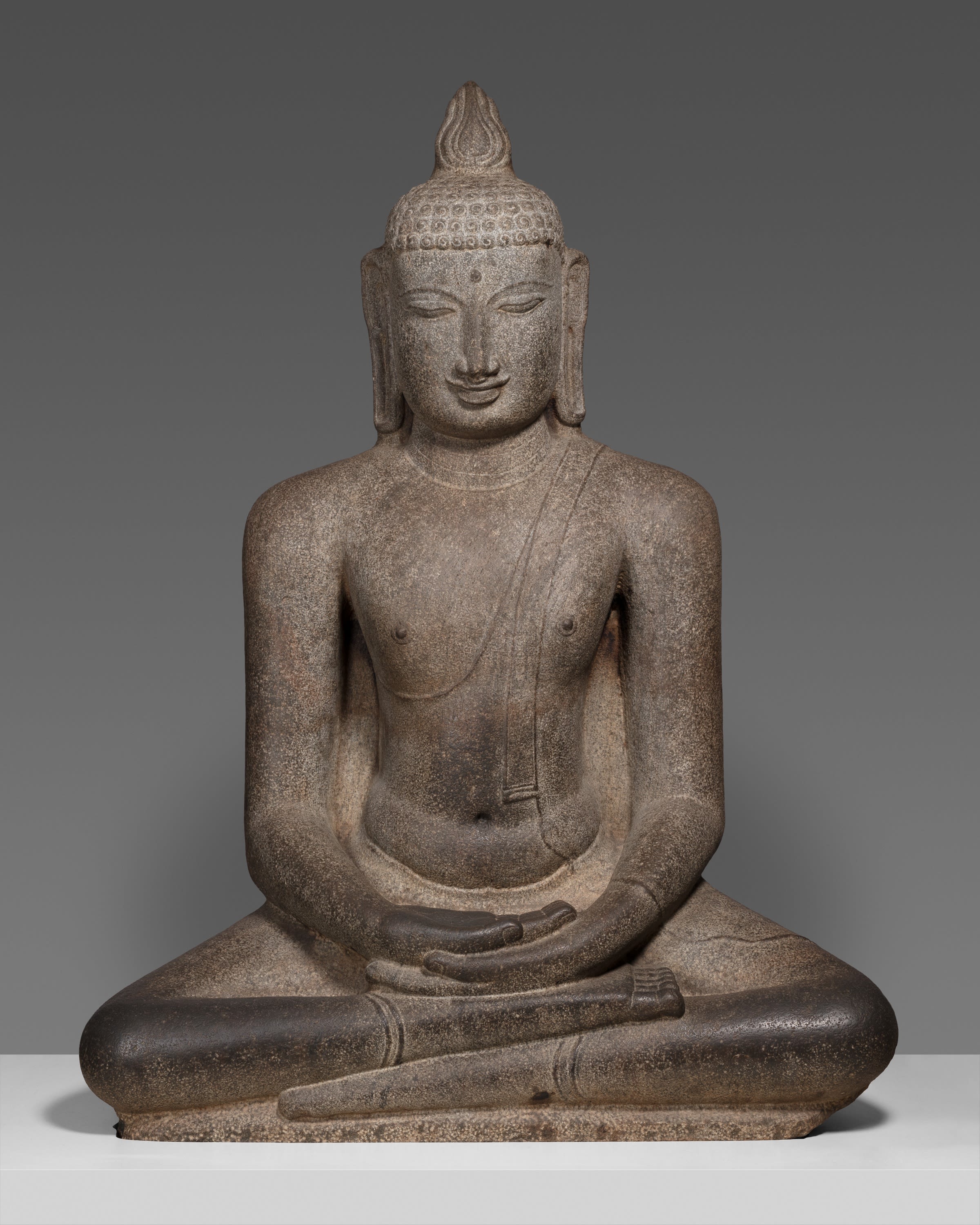
Buddha Shakyamuni Seated in Meditation (Dhyanamudra), Chola period (c. 855-1279), about 12th century
Buddha Shakyamuni Seated in Meditation (Dhyanamudra), Chola period (c. 855-1279), about 12th century
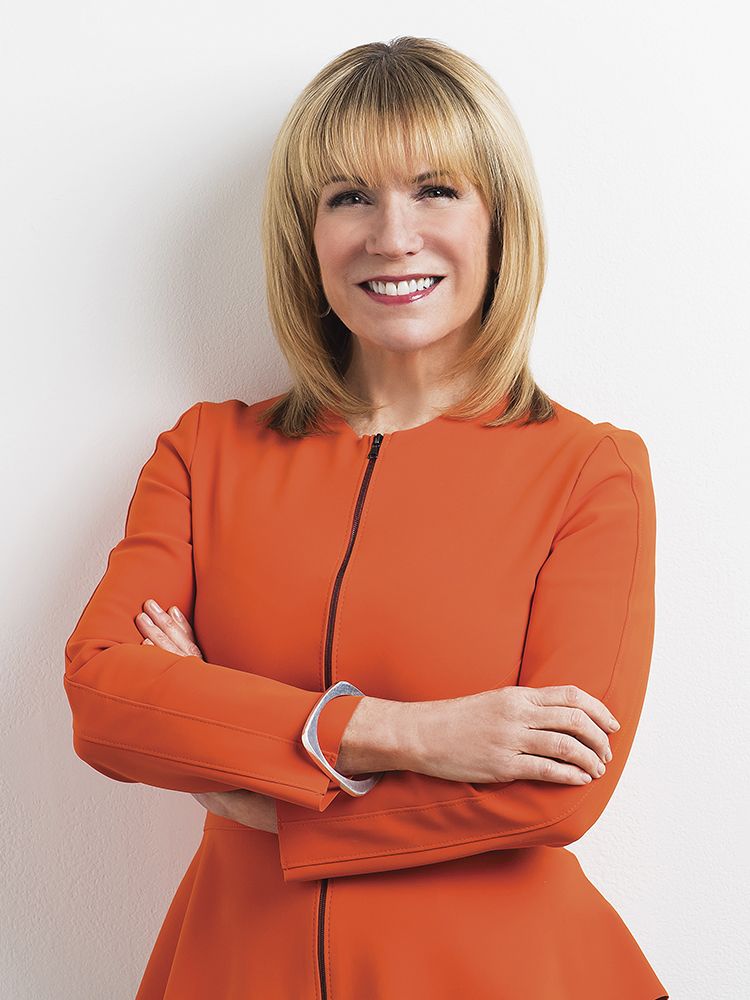
Elissa Tenny
Hometown:
New York, New York
Favorite Artist or Work:
Right now, I have an incredible fascination with Amanda Williams. Color(ed) Theory is just extraordinary.
Best Thing about SAIC:
Being “of Chicago” is core to our identity, and we’ve made an effort to deepen our connection to the city at SAIC. We’re stronger as a result of being more connected to Chicago.
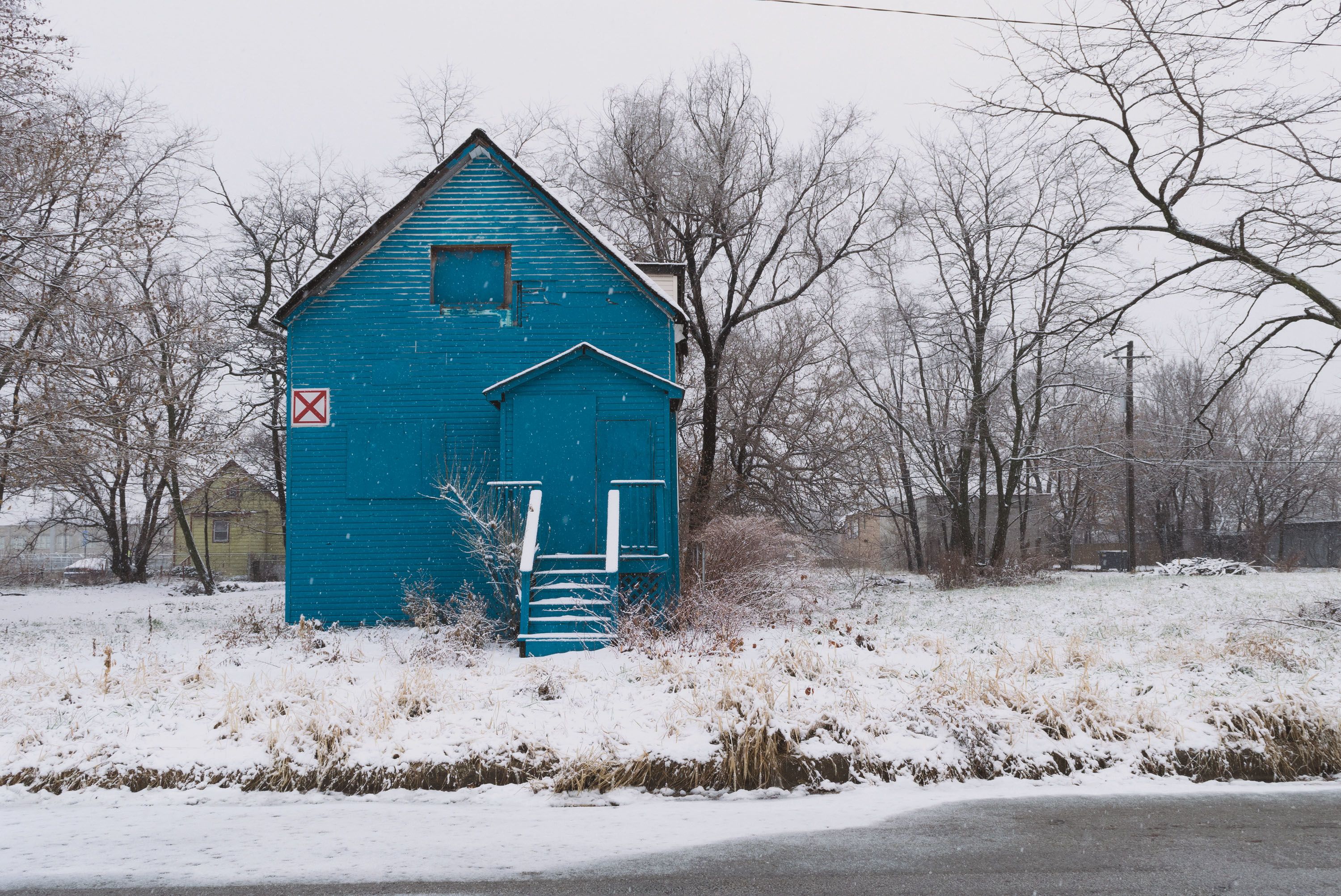
Amanda Williams, Color(ed) Theory: Ultrasheen, 2014–15
Amanda Williams, Color(ed) Theory: Ultrasheen, 2014–15
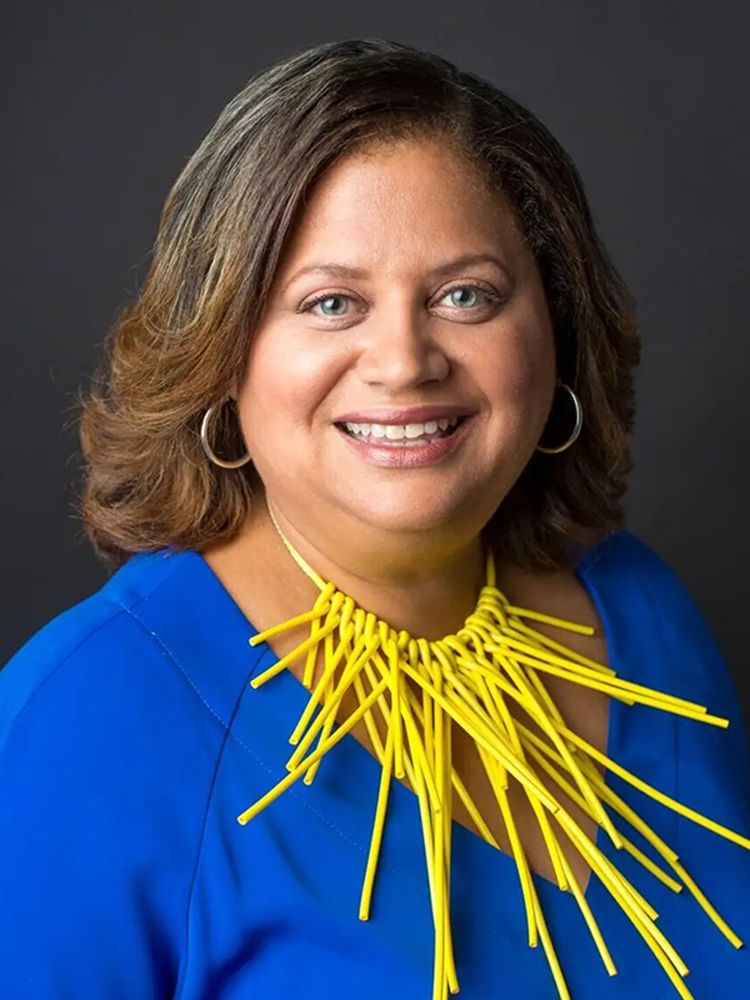
in Conversation with:
Michelle T. Boone
Hometown:
Chicago, Illinois (plus a shout out to Gary, Indiana—I spent a portion of my childhood there as well)
Favorite Artist or Work:
Too many, but two of my favorite artworks in the city are at the Art Institute. I absolutely love Georgia O’Keeffe’s (SAIC 1905–06) Clouds (Sky above Clouds IV) and Gerhard Richter’s Woman Descending the Staircase. I also love the Archibald Motley (1914–18, HON 1980) work Nightlife—it’s just so Chicago! There’s no way I could pick one favorite artist or artwork.
Best Thing about SAIC:
The constant flow of new talent that comes to and out of the School. It’s a tremendous legacy that is always building and growing. It’s an incubator for launching the artists of tomorrow.

Georgia O'Keefe, Sky Above Clouds IV, 1965
Georgia O'Keefe, Sky Above Clouds IV, 1965




ART WORLD BEGINNINGS

Michelle:
Even though today you sit here as arts leaders, there was a time when you were just beginning to form your connection to the art world, and specifically the Chicago art world. So, you’re of Chicago now, but I think I’m right in that the three of you aren’t originally from here. Is that right? How did this journey begin for you?
Denise:
Growing up in the Cleveland area, the Cleveland Museum of Art had a huge presence. So, of course, we had field trips there. And right next door, the Cleveland Institute of Art and the Cleveland Institute of Music both had a wide range of youth classes. I studied music and my sister studied art. It was great that you had these institutions connected with the museum, somewhat like what we have here at SAIC. It’s really powerful to have students creating right next door to a world-renowned arts institution. That was one of my take-aways from Cleveland: the importance of having an educational campus adjacent to these centers for the arts.
Michelle:
Where’s your hometown, Anita?
Anita:
Mumbai, though I’ve lived in the US a lot longer than I lived in India. I left right after I finished my undergraduate work to come and get my graduate degree in Massachusetts. I’ve always loved the humanities, literature, and the arts, and after my kids went off to college, I became more involved with the museum and the School.
Michelle:
Given you have personal experience moving to a new country, how have you seen art impact the lives of our international students?
Anita:
Visiting alums in India, I was struck by the impact an SAIC education had on their lives and the many ways in which they are contributing to society. Some are renowned artists. Others are doing conservation and historic preservation work, restoring communities whose crafts are dying out. One alum has redesigned the arrival terminal of an airport. Some have branched out into entrepreneurship. Their time at SAIC opened up their minds. Every one of them tells me that it was SAIC that made them who they are today.
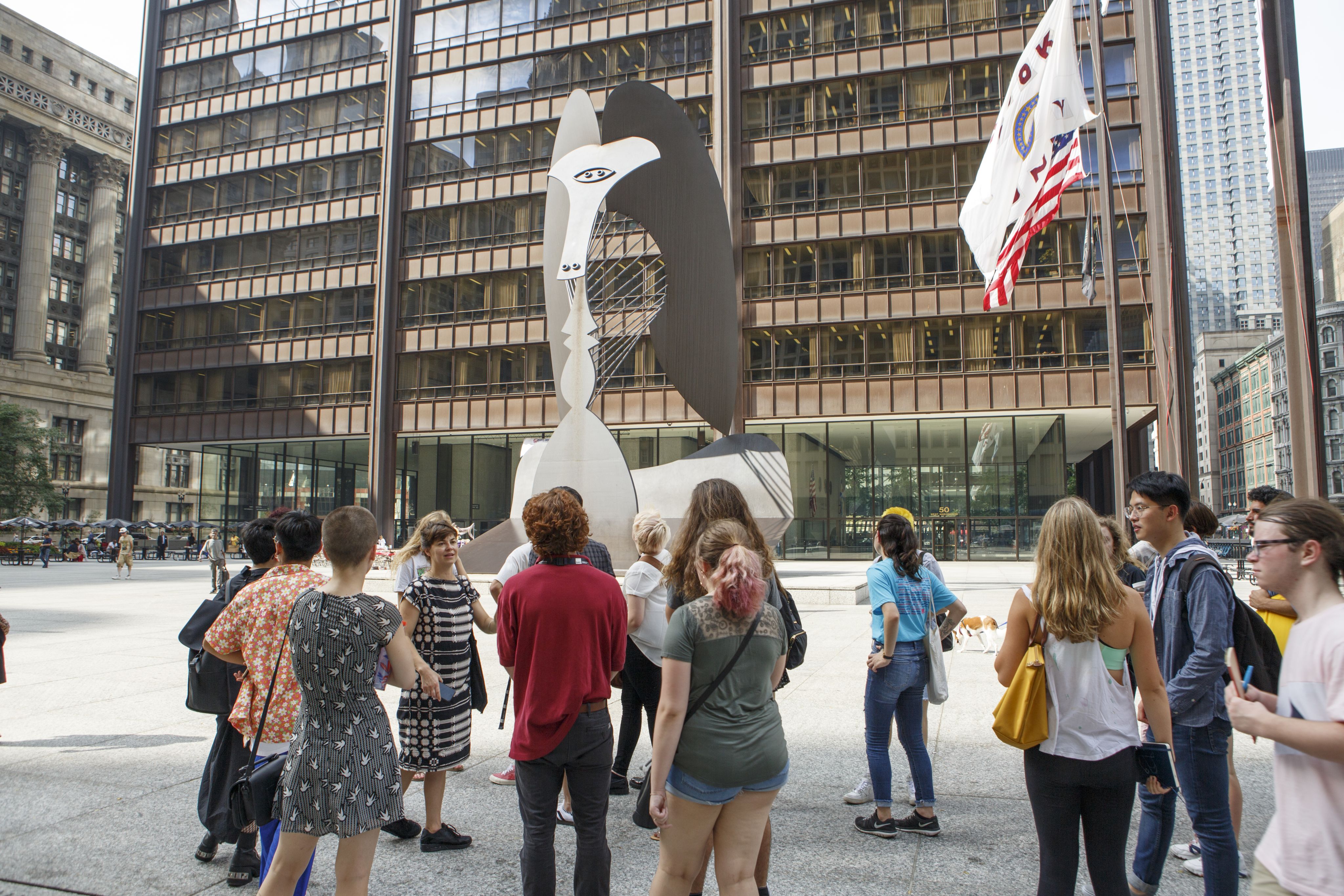
SAIC students visiting the untitled Picasso sculpture in Chicago's Daley Plaza
SAIC students visiting the untitled Picasso sculpture in Chicago's Daley Plaza
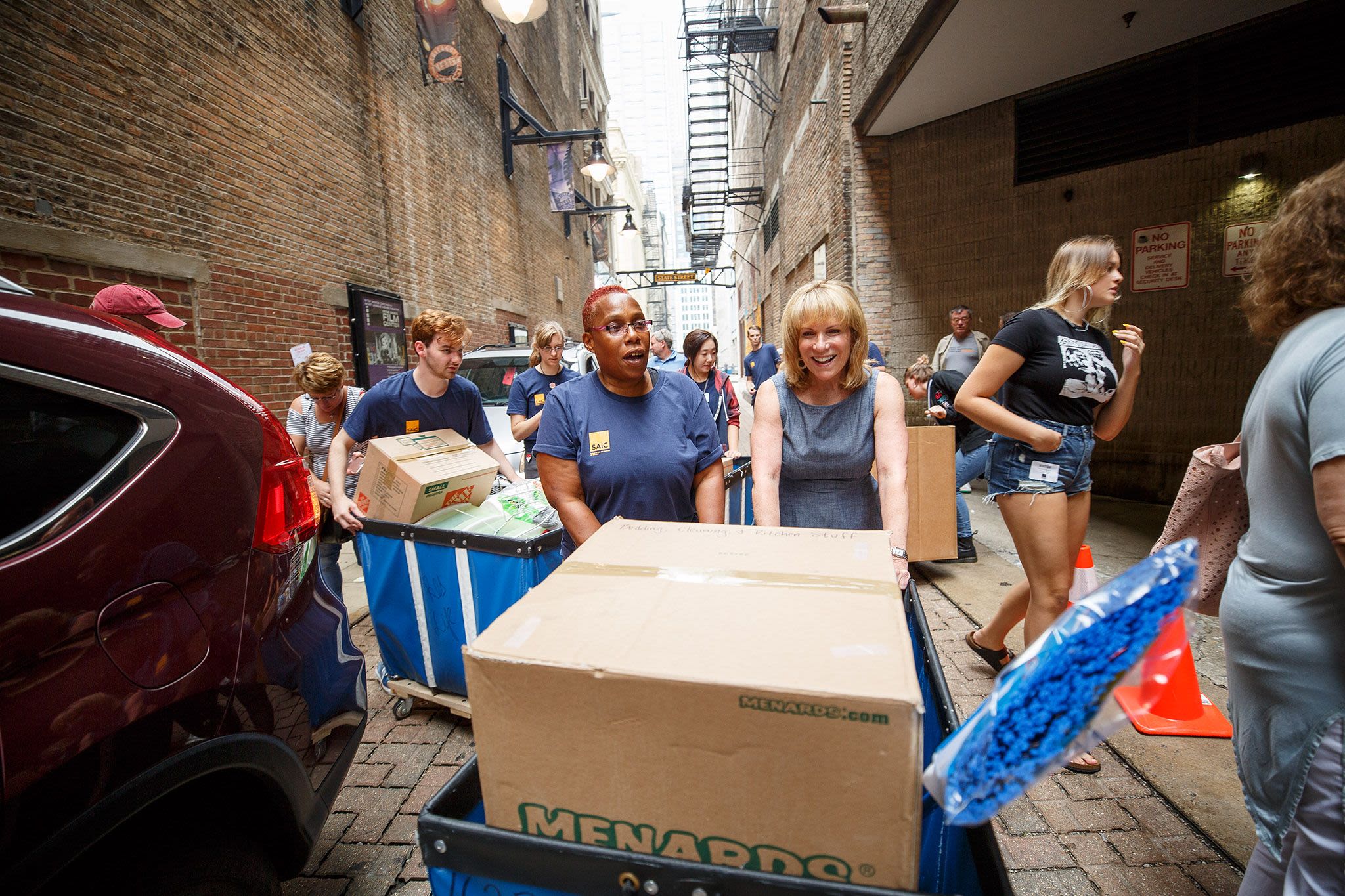
President Tenny on move-in day at SAIC
President Tenny on move-in day at SAIC
Michelle:
That’s amazing to hear. Where’s your hometown, Elissa?
Elissa:
New York City. I grew up in Manhattan, but my family was not into the arts at all. So, it was really not until I was a young adult that I became connected to museums and the art world through my own curiosity. I often visited the Met and MoMA, but really, in Chicago, the arts are so much more accessible than in New York. You’re welcomed into all of the artistic communities here. There are fewer barriers. In Chicago, there’s also a much more palpable commitment to giving back in the arts world, to supporting your community.
Michelle:
Those solid Midwestern values.
Anita:
Indeed. And you see our alums spreading out all over the world, carrying those values with them.
“In Chicago, the arts are so much more accessible than in New York. You’re welcomed into all of the artistic communities here. There are fewer barriers. In Chicago, there’s also a much more palpable commitment to giving back in the arts world, to supporting your community.”
LOOKING AHEAD
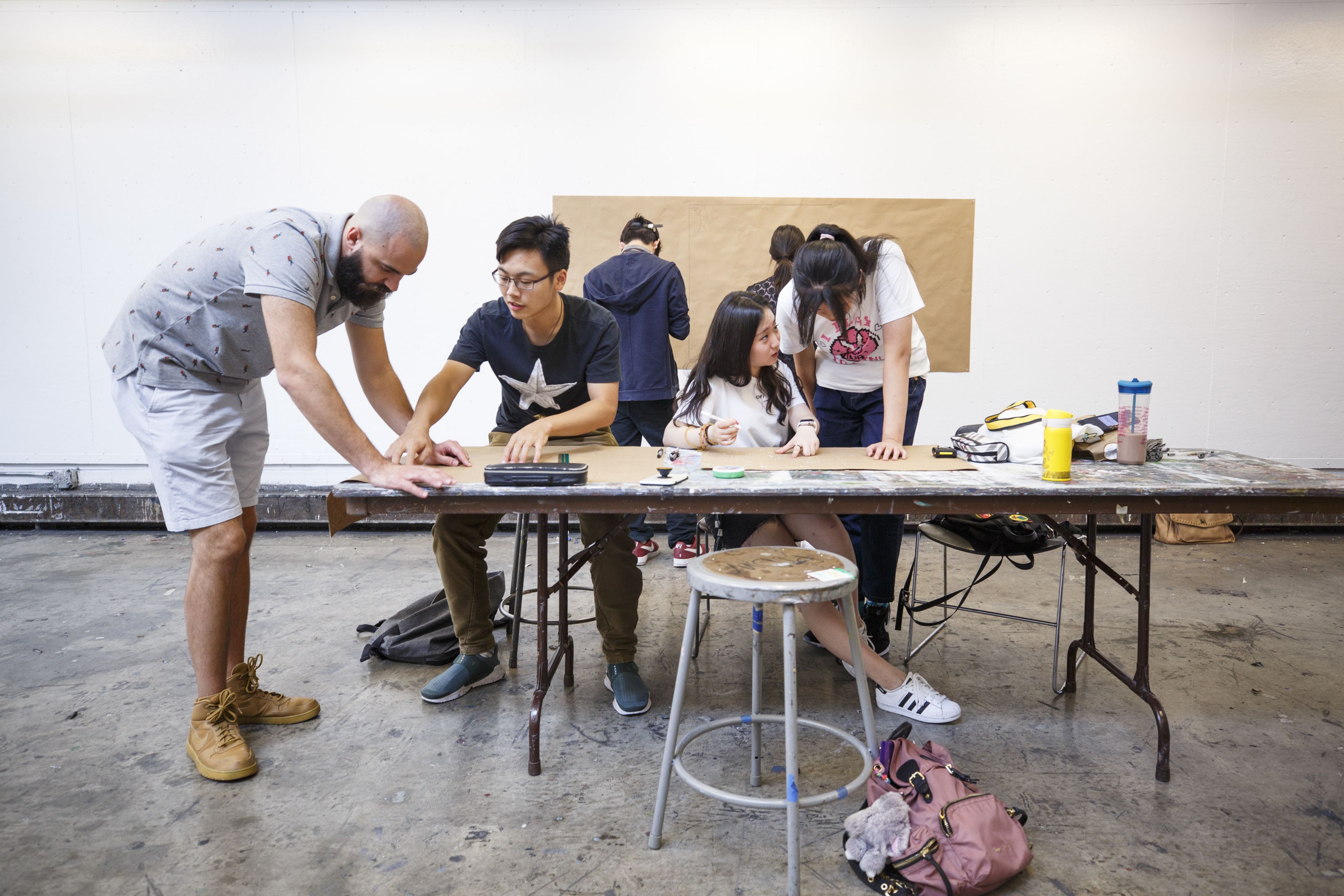
Michelle:
Big question coming: What is the impact that you want to have made or that you would like to see 25 years from now based on your leadership roles with the School? What’s the one hope that you would want to see come of your time here?
Elissa:
That this is not unusual: As SAIC’s first woman president, I’m sitting here with Denise as the first African American woman leading our Board of Trustees and Anita as the first South Asian woman leading the School’s Board of Governors. While we’re all “firsts,” my hope is that each of us continue to play a role in mentoring the next generation. We’re here to remove barriers for women and women of color to leadership positions.
Anita:
Yes, I agree. What I want to see 25 years from now is that we have made such progress in terms of representation and access that there won’t be a need to appoint another Board diversity task force, which I’ve just done. That’s an initiative that I take very seriously right now, and I hope it has a lasting impact.
Elissa:
And your work is so aligned now with the rest of the work at the School. Now there’s a way in which we’re more complete in terms of the direction and the commitment to this work—you initiated bringing the Board into it in a deep way.
Anita:
I’m proud to say that the full Board is behind this initiative and many are quite passionate about it and motivated to work toward success. So, I’m hopeful. We have a long-range plan—three to five years—which we’ve just launched. We have appointed a task force with a charter and a plan of action.
Denise:
That’s incredible and so big. To echo what both of you said, I think it’s really important that this is not extraordinary anymore, it’s ordinary. That, like you said, you don’t need a diversity task force—that it’s just a thread in the fabric of both the School and the larger institution. The School admitted women and people of color from the day their doors opened. But to have a school where everyone feels comfortable and feels that they’re not just being given permission to attend the School, but that they’re valued and they’re wanted there, that would really be an incredible legacy.
Anita:
Exactly. And also, to have the faculty and the Board be representative of the students that are here, so that whatever cultural background you come from—or ethnic background or race background—you see somebody that you identify with. On every level, diversifying every constituency is a win-win.
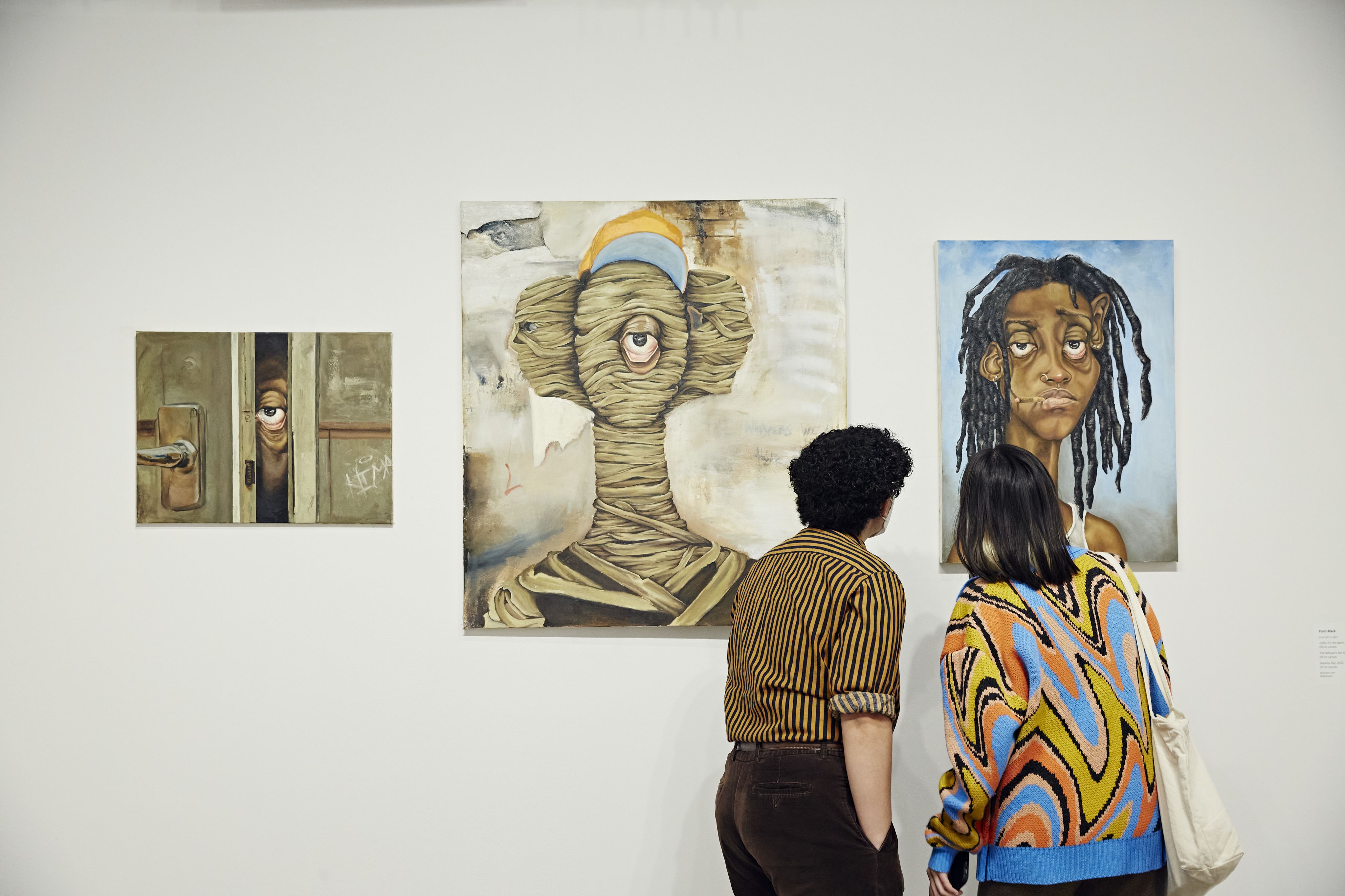
SAIC students taking in work at an exhibition
SAIC students taking in work at an exhibition
“To have a school where everyone feels comfortable and feels that they’re not just being given permission to attend the School, but that they’re valued and they’re wanted there, that would really be an incredible legacy.”
revisiting mission statements
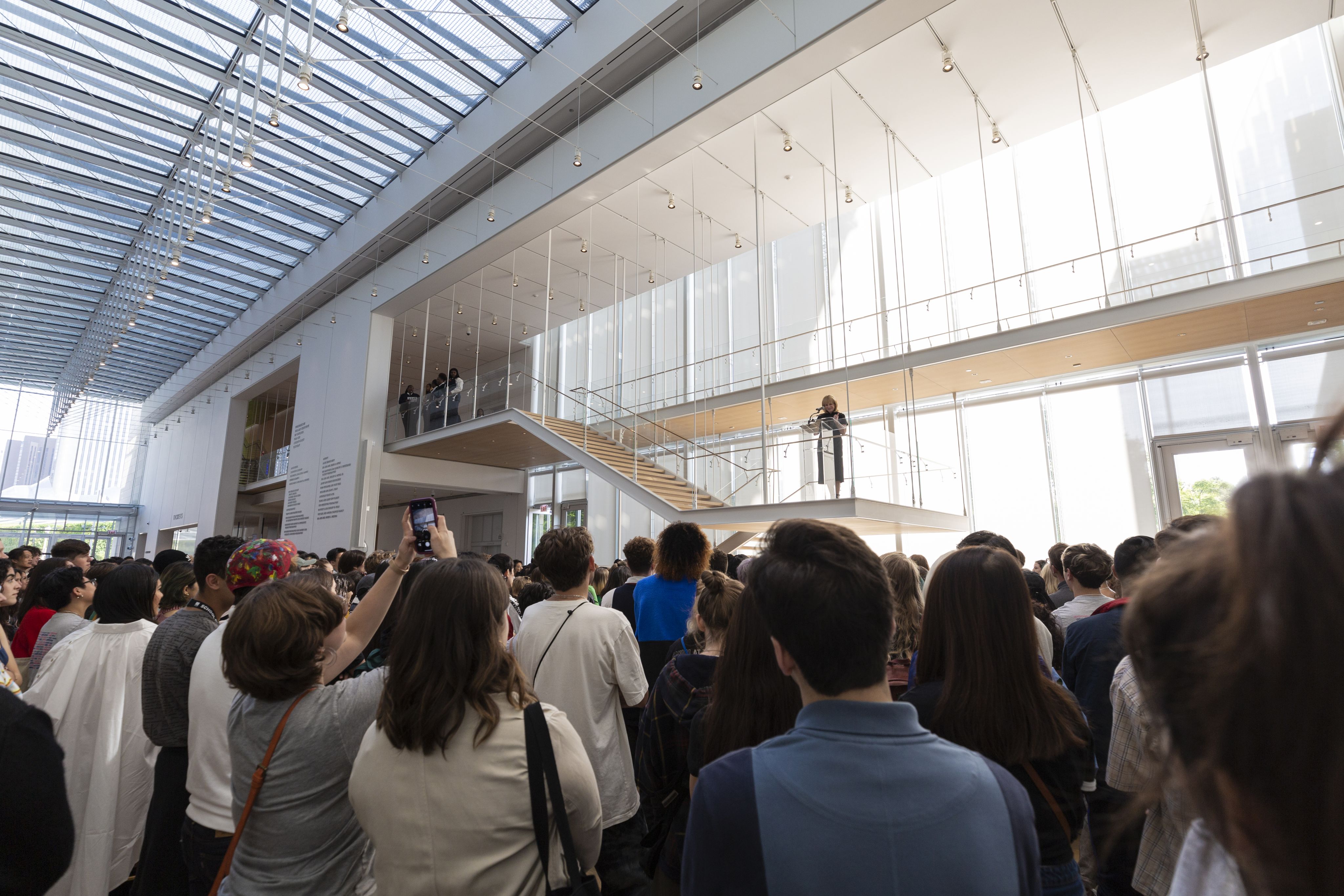
Michelle:
For me, it all starts with the mission. At the Poetry Foundation, we’re in the process of developing a new strategic plan and we’re spending time now thinking about our mission, which was developed 20 years ago at the start of the foundation. Is it still relevant? Does it speak to the kind of institutional values of upholding diversity and equity that we talk about? But it starts with that. Do you think the mission of the School or of the museum speaks to the goals of the diversity, equity, and inclusion work that you guys are trying to lead with?
Elissa:
It’s a really good question because, a dozen years ago, the School developed a set of core values and, half a dozen years before that, refreshed the mission. Through our Anti-Racism Committee work, it has become clear that we need to revisit them. So now, there is a group coming together to revisit those core values and mission and make them more reflective of who we are and who we want to be.
Denise:
I think that’s so essential because we’re still in a world where people have their mission statements and then they have an equity statement. Well, why isn’t there just one statement? I’m delighted to hear that that’s something that you’re addressing at the School.
the value of an art and design education
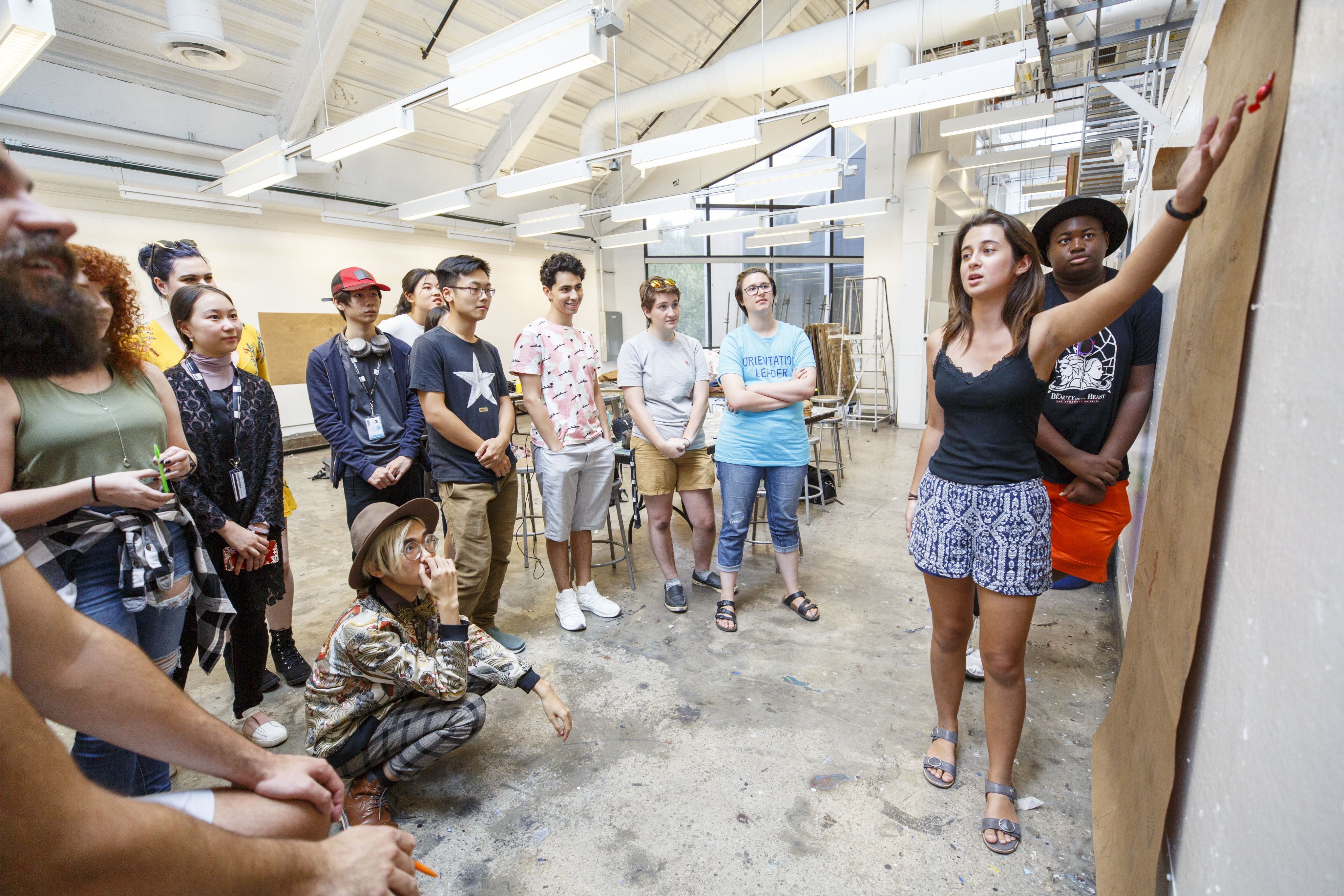
Michelle:
Here’s a good one. While many art school graduates go on to work in museums, galleries, and studio-based production, many will also go on to find success in other fields and industries. What qualities do art school students possess that help them throughout their careers? Whether or not SAIC graduates become practicing artists, what skills would be most needed or in demand by employers 10 years from now? Or rather, I’d be curious what you think are the necessary values, too, because that’s really important to me.
Elissa:
A few years ago, we received a grant from the Spencer Foundation to bring together six of the independent art and design colleges, including SAIC, to look at exactly this question about dispositions. It was pretty fascinating that part of what we found that was distinctive about artists, in particular, was the creativity—of course, that’s a natural—but also the resilience. One finding that was most intriguing to me was a tolerance for ambiguity.
Michelle:
That’s a good one.
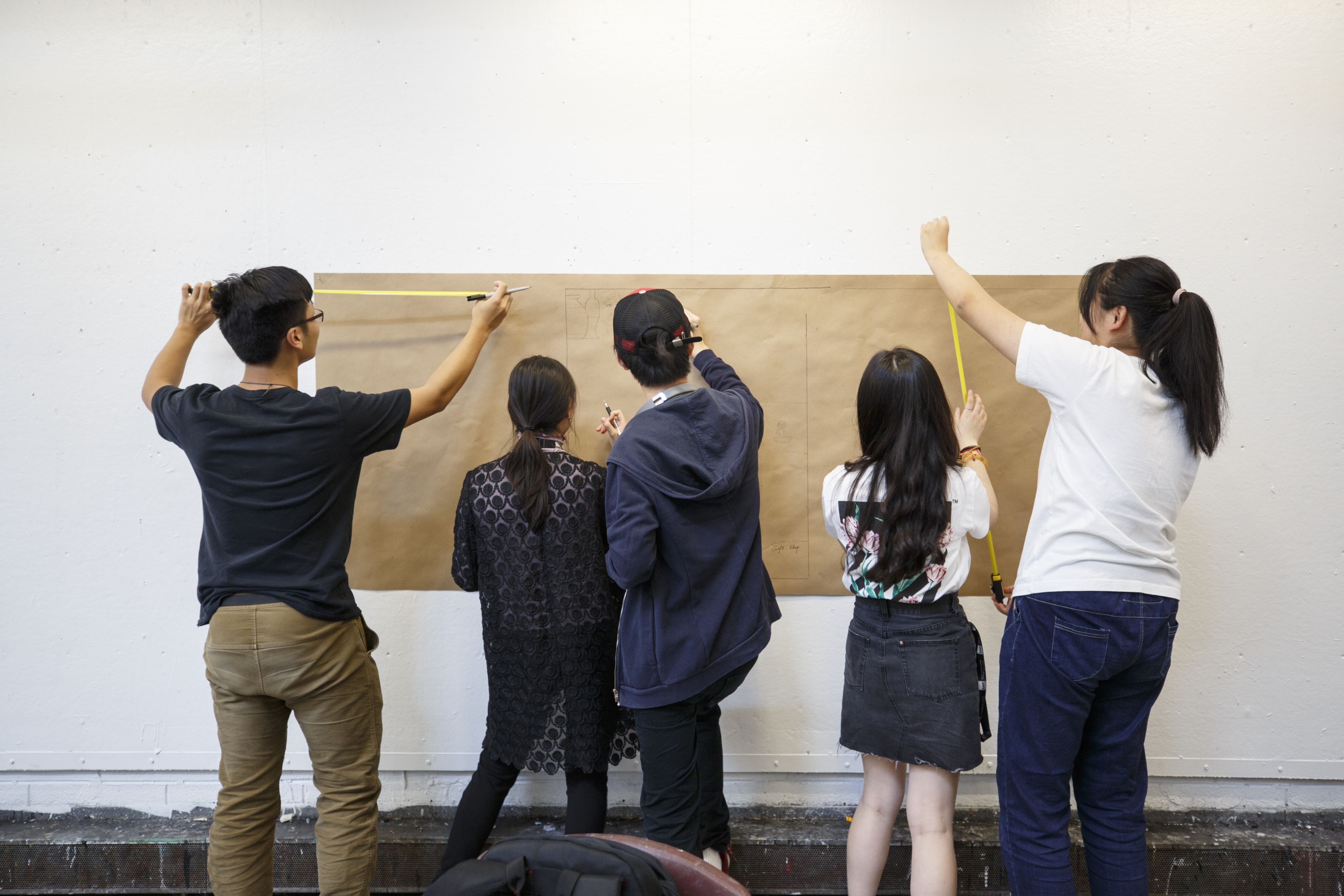
SAIC students collaborate on a project
SAIC students collaborate on a project
Elissa:
But the main finding was that artists and designers have a very strong disposition for metacognition, or more simply: thinking about thinking.
Michelle:
What does that mean?
Elissa:
It means that artists and designers have an ability to reflect and iterate, which leads them to problem solve. It was an impressive set of findings. But, I have to say, while the dominant one was metacognition, the tolerance for ambiguity, to me, in any workplace is a really valuable skill.
Michelle:
And how do you think that’s going to inform what you do or what you recommend in terms of the curriculum?
Elissa:
I think what it highlighted for me is the huge importance of the critique process. During our research, the critique was the unit of study we used to locate the dispositions, especially metacognition, as the critique process is a nearly universal tool of instruction and evaluation in any art and design classroom. That makes the critique very powerful. SAIC faculty are currently going through a pretty significant review of critique methods, particularly in terms of sensitivity about different cultures and backgrounds. There’s a widespread awareness of the need to make much more room for cultural understanding in terms of students’ backgrounds, cultures, ethnicities, and race.
Michelle:
Which gets to what we’ve discussed about the need for diverse faculty.
Elissa:
Exactly.
Anita:
And Board members, too. I think it sends a message to faculty, students, and all of the School’s constituencies when the Board represents who they are as well.
Denise:
That’s a really good point. The importance of innovative thinking about board design and how it connects to students and faculty and what voices are at the table.
CITIZEN ARTISTS
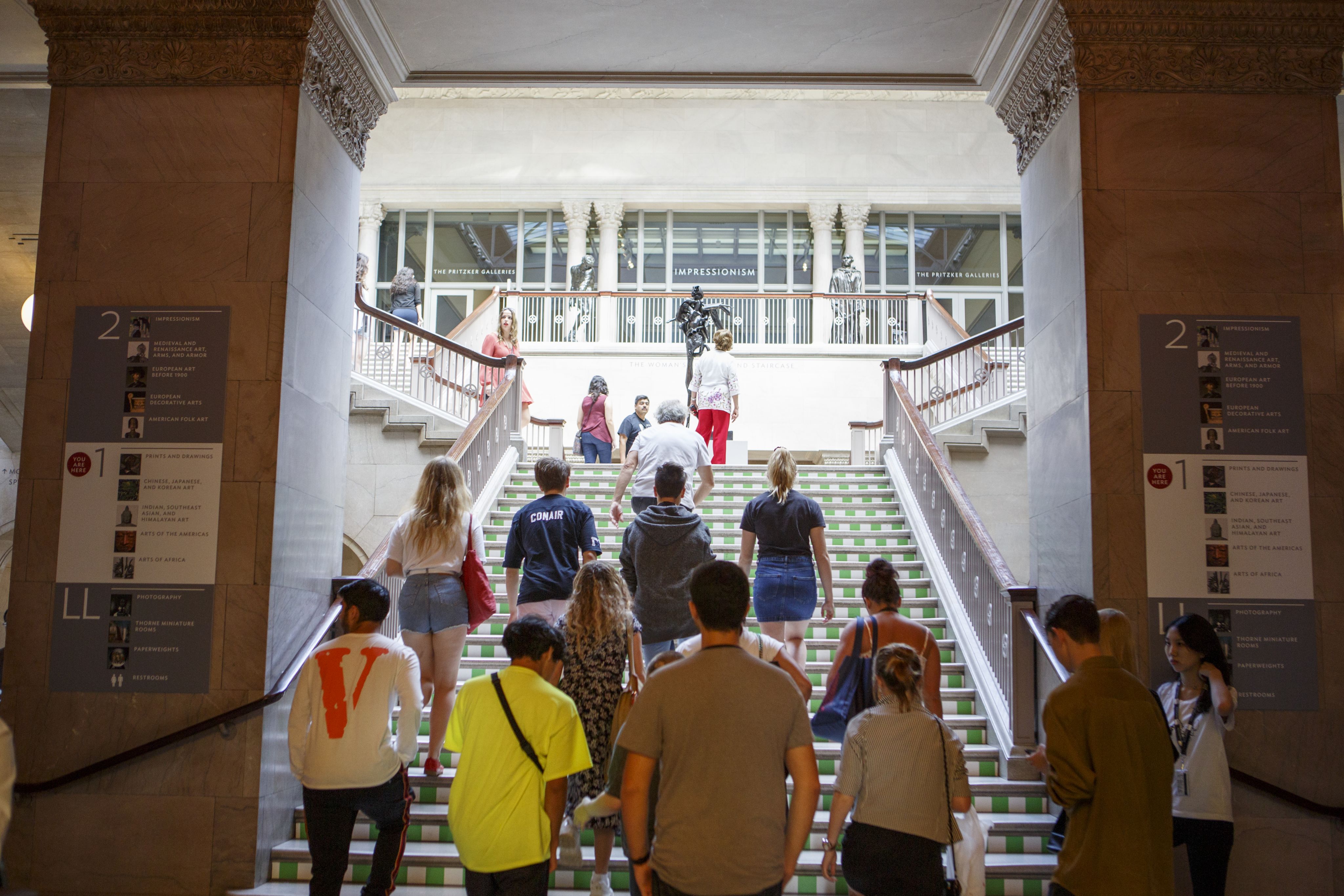
Michelle:
What is the responsibility of the School to help the student experience expand—to think more broadly about your role as a citizen and a member of a community beyond the walls of the School?
Anita:
The School focuses on the entirety of the student experience. It’s a holistic approach to education which fosters a sense of belonging and overall well-being among students with an emphasis on their role in the society they live in. I think that really speaks highly to the success we have with students and their sense of belonging, which is so important, especially when they come from all over the world. They feel respected and heard.
Elissa:
We use the phrase “citizen artist” at the School. Which is not about a particular nationality; it’s about how we are interconnected as a people. I think what we feel deeply and talk openly with students about is their responsibility for our shared society. It’s the society they have a vital role in creating. Artists and designers have always reflected society back to itself, withstood oppression, brought beauty into existence, and imagined new ways of being.
I think that old idea of the artist—someone who lives discreetly and apart from society—it’s from the past and it’s no longer relevant to the current students that we invite to the School.
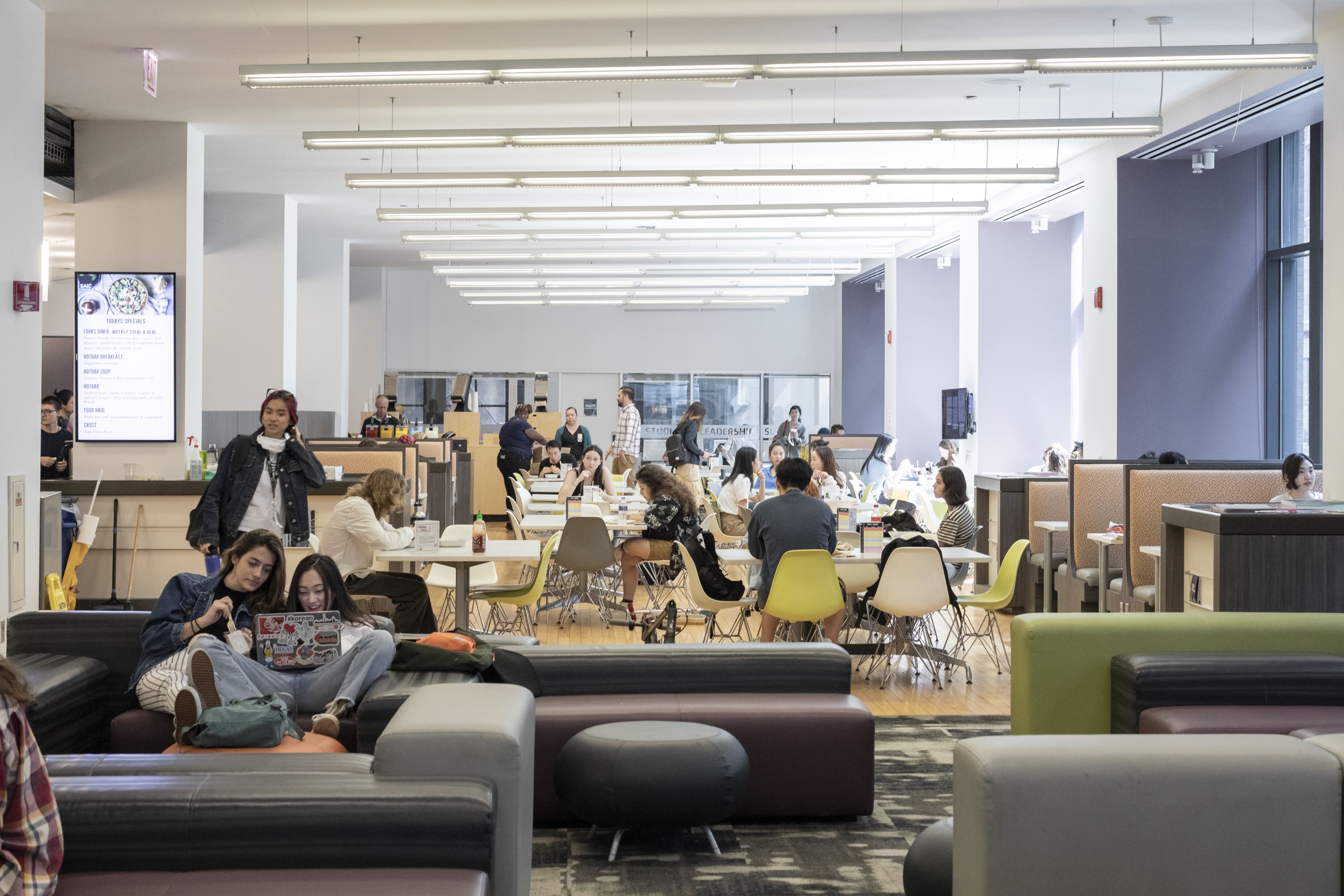
SAIC students gather on campus
SAIC students gather on campus
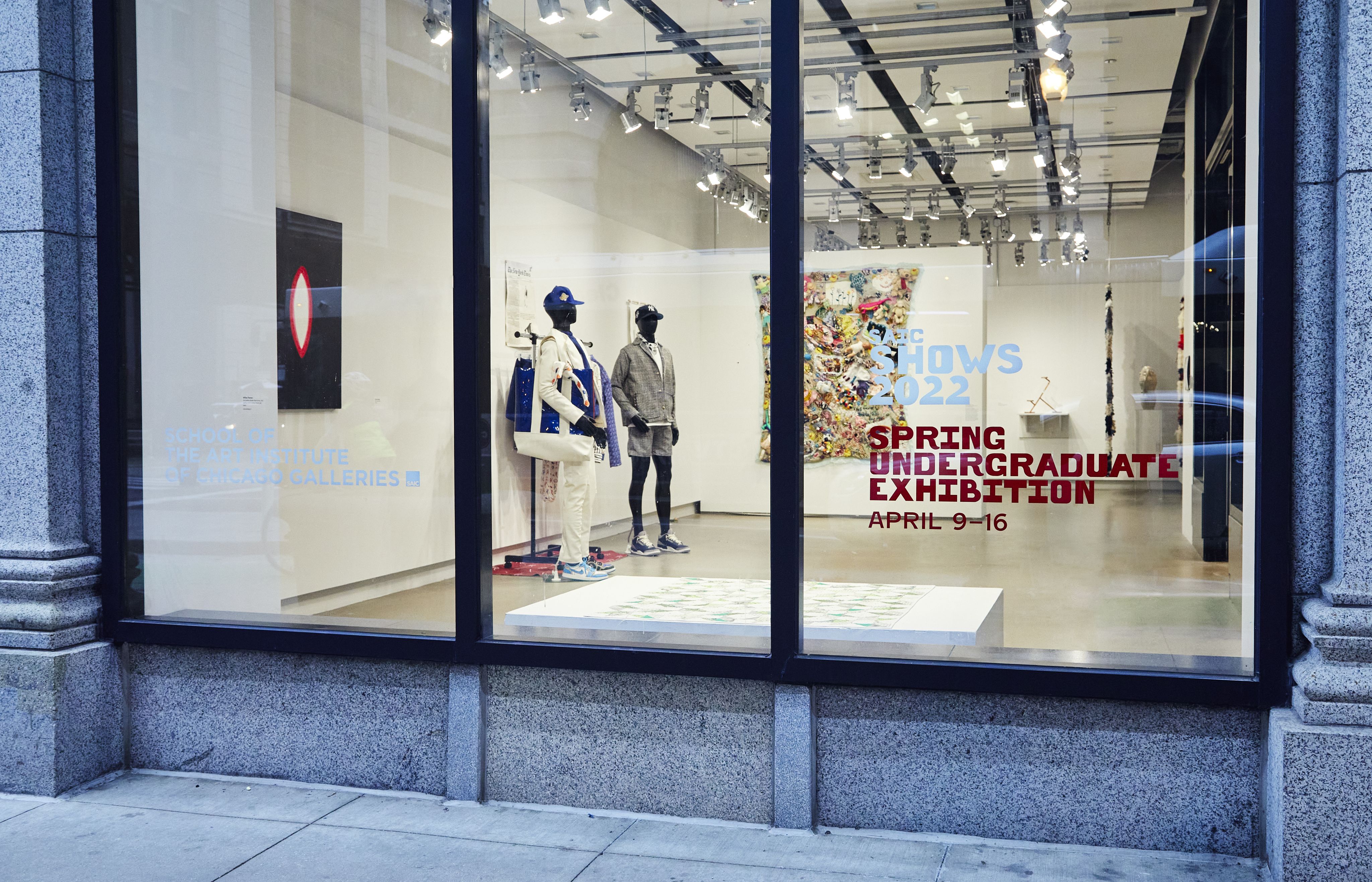
The front windows of SAIC Galleries
The front windows of SAIC Galleries
Anita:
Elissa mentioned the phrase “citizen artist,” a way of being an artist connected to—and not apart from—the society they live in and contribute to. You feel and see this in our students’ work, in the ways they think and live. It’s wonderful.
Michelle:
I’m reflecting on how artists are responding to—and incorporating—the social conditions of the city in which they live into their work more and more. I think that will be interesting to watch: how artists will continue to be inspired by social issues and use art as a tool for social justice.
Denise:
I do think that artists respond to issues of social justice and other issues through their art. It’s a trend of not just the artists themselves but of the audiences who respond to the art, museum visitors. From what I understand about students visiting the museum, the questions and conversations are changing. Our young people are changing, leading that path and leading that way. It’s important because it shows that in the world of the arts, it’s important to reflect what people are experiencing, what people are thinking about, and what people are caring about.
Elissa:
And we know students are often the ones leading the change. ■
Interviews have been edited and condensed.

